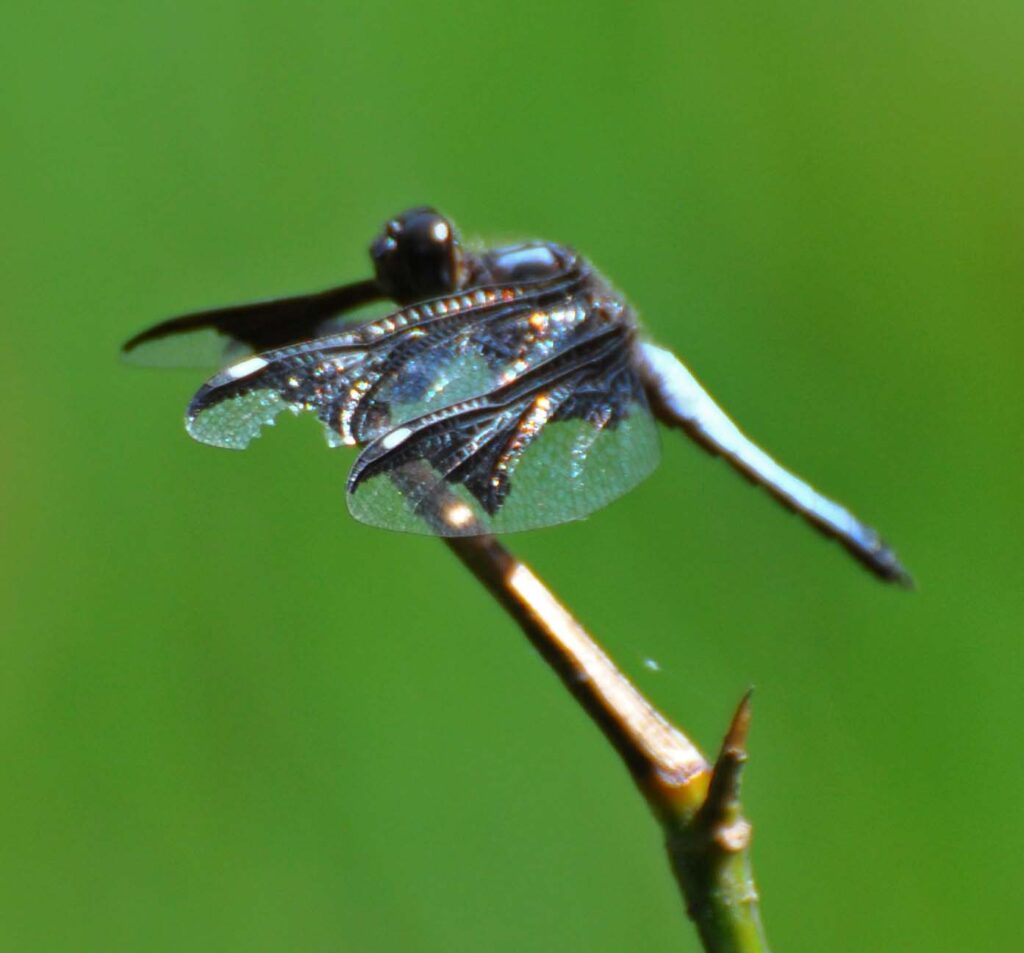Weavers are small songbirds and can be identified by their nest since each species weaves a distinctive nest. Thick-billed weavers have a large bill. The male weaves the nest and may have as many as 8 nests going at once. The female does most of the feeding. In this picture, you can see the male is mostly dark (many weavers are yellow so this dark coloring is distinctive). You can also see a patch of white on the wing and on the forehead.

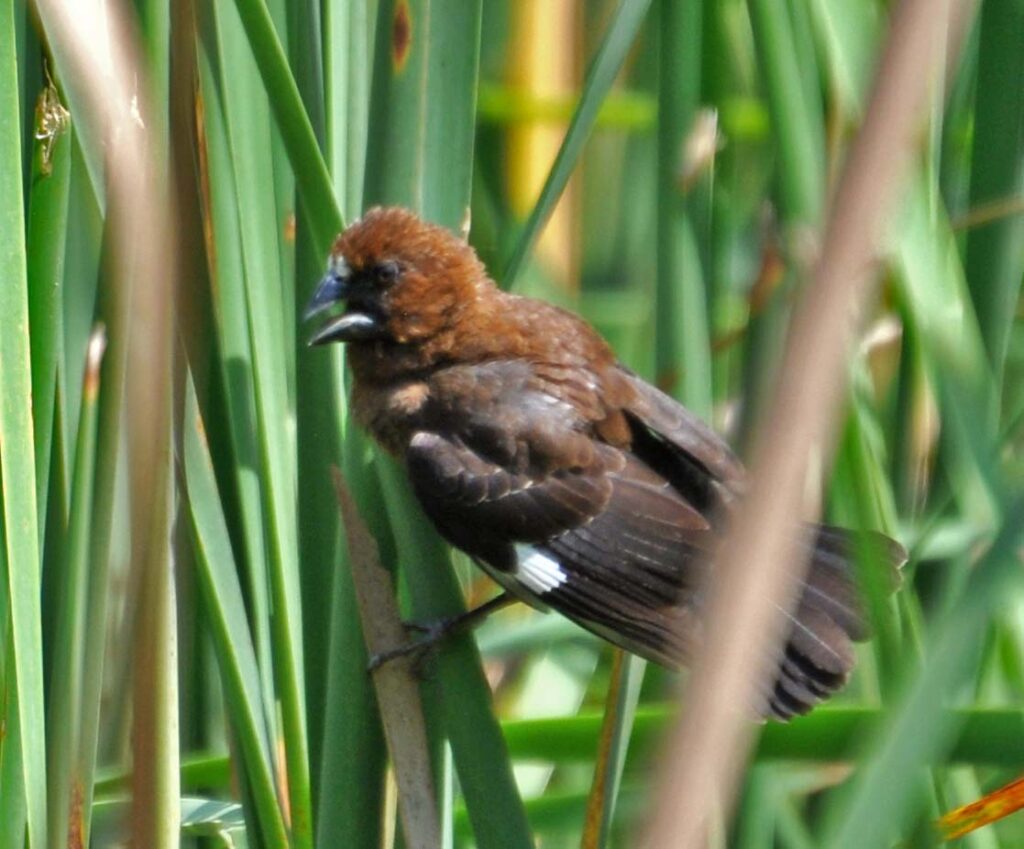
These thick-billed weavers generally build their nests in wetlands with two reeds holding up the sides of the nest. Many weavers, by contrast, hang their nests from tree branches. In this case, these plants are cattails, called Typha capensis, a species native to southern Africa.
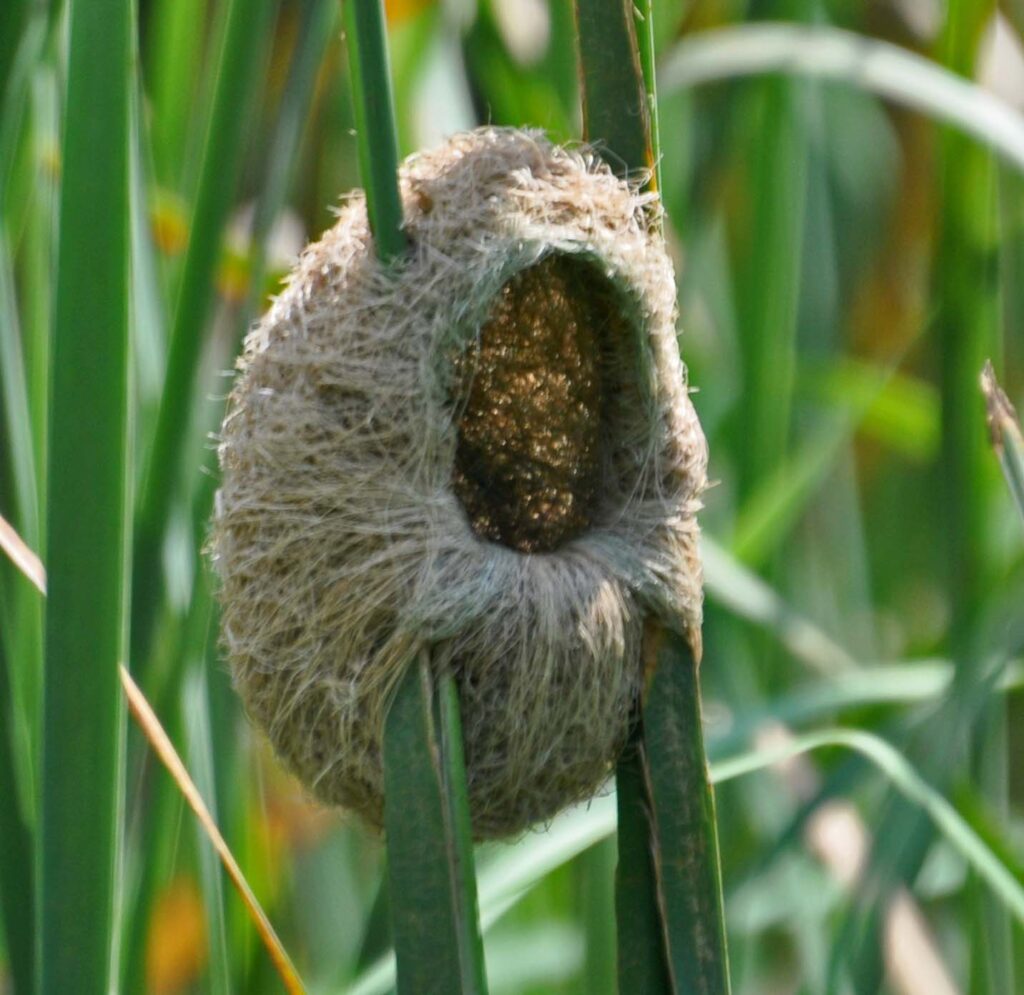
After the eggs are laid, the birds make the nest more secure by weaving a tube for the entrance.
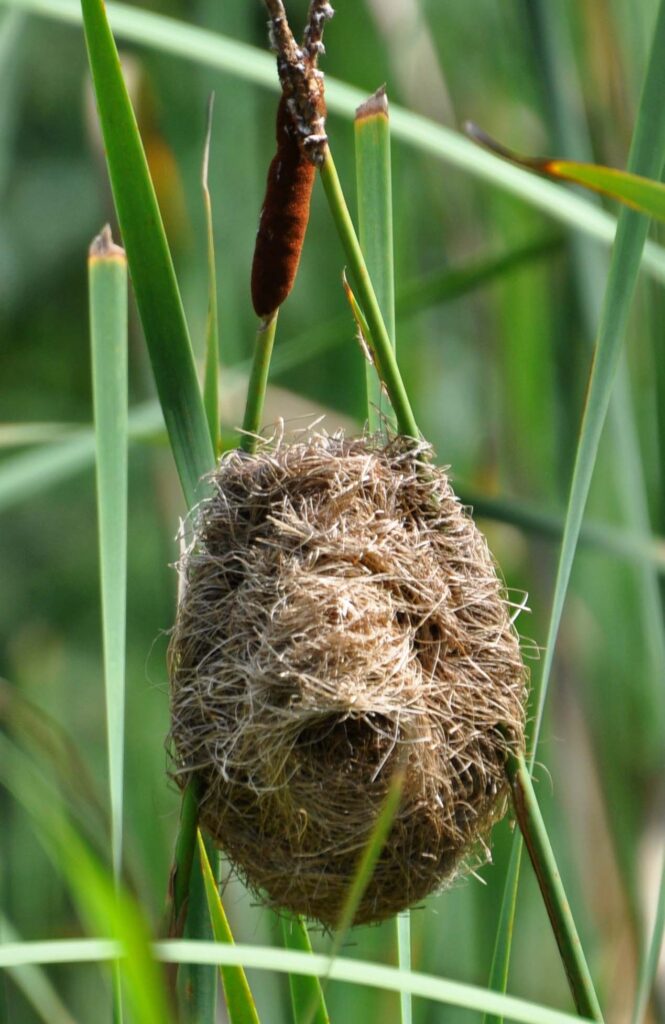
Here is a nest just being started. You can see by the color of the grass that it’s pretty fresh.
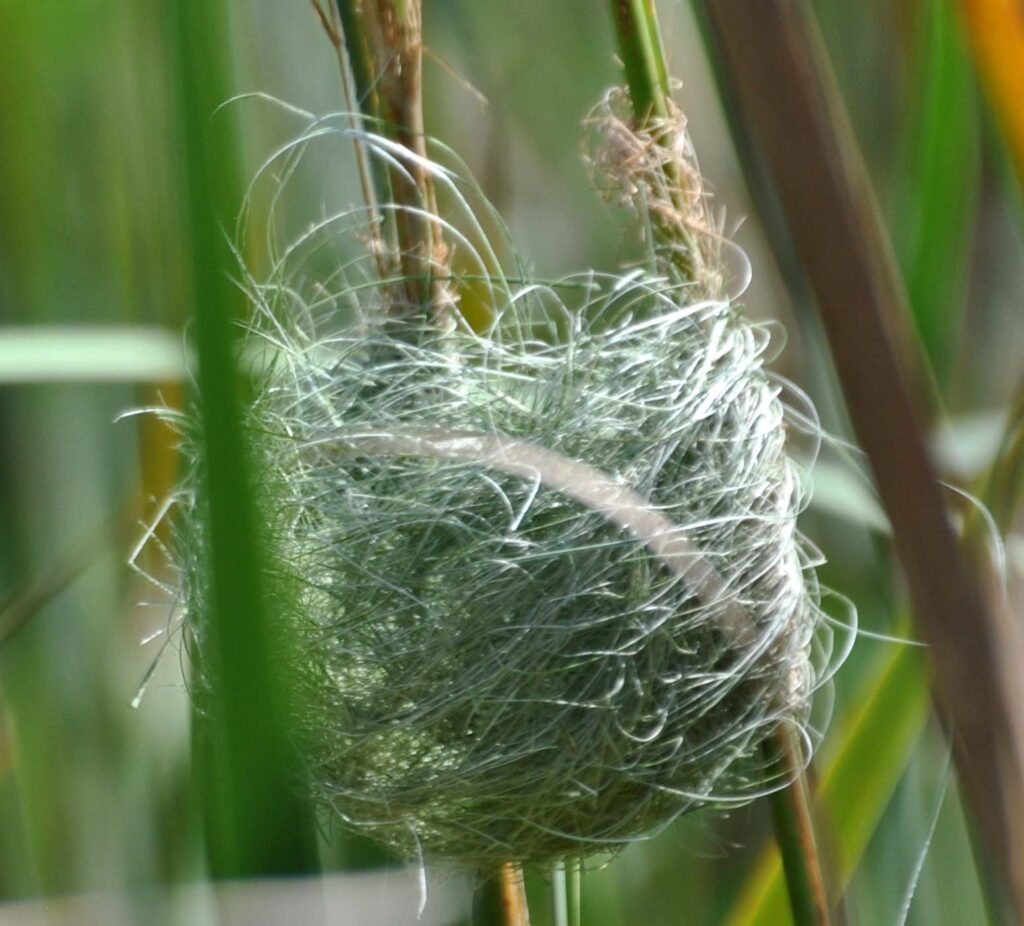
Here are a couple photos of the male weaver doing the weaving. Interesting that the bird is dexterous enough to do this with that thick bill!
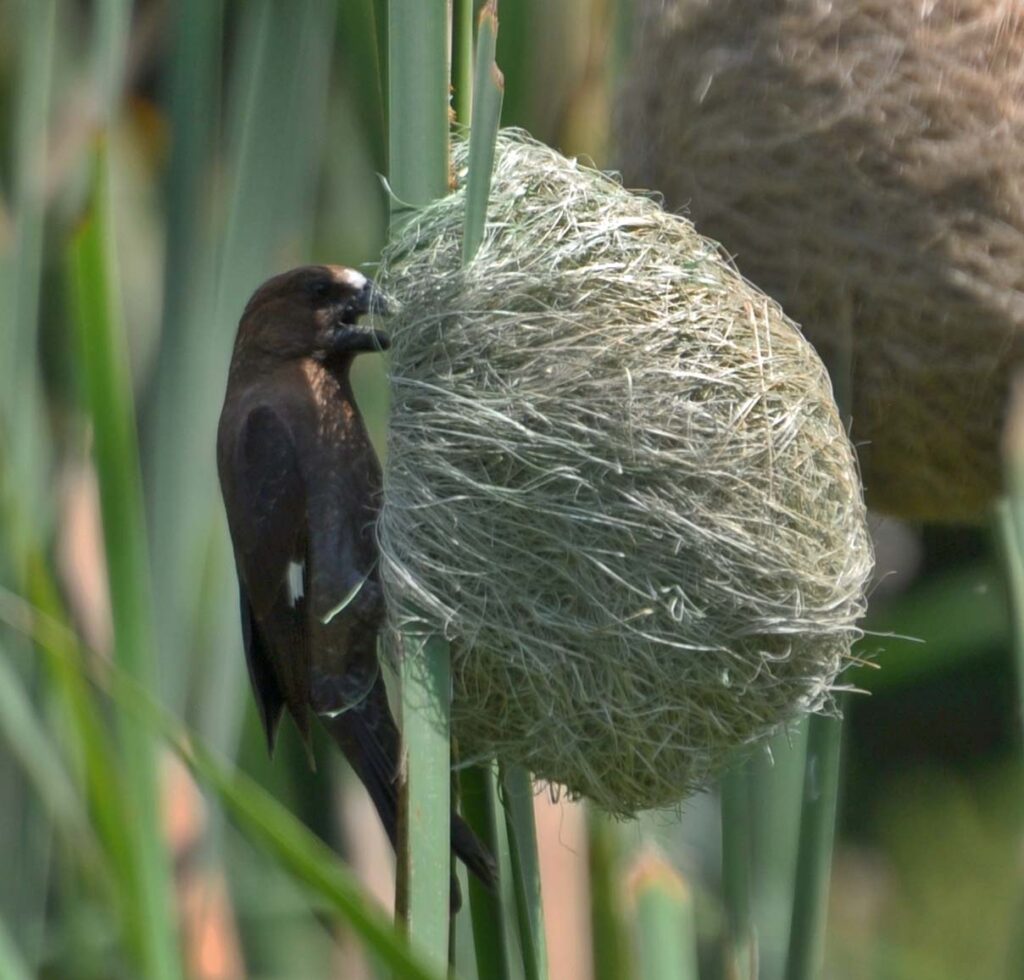
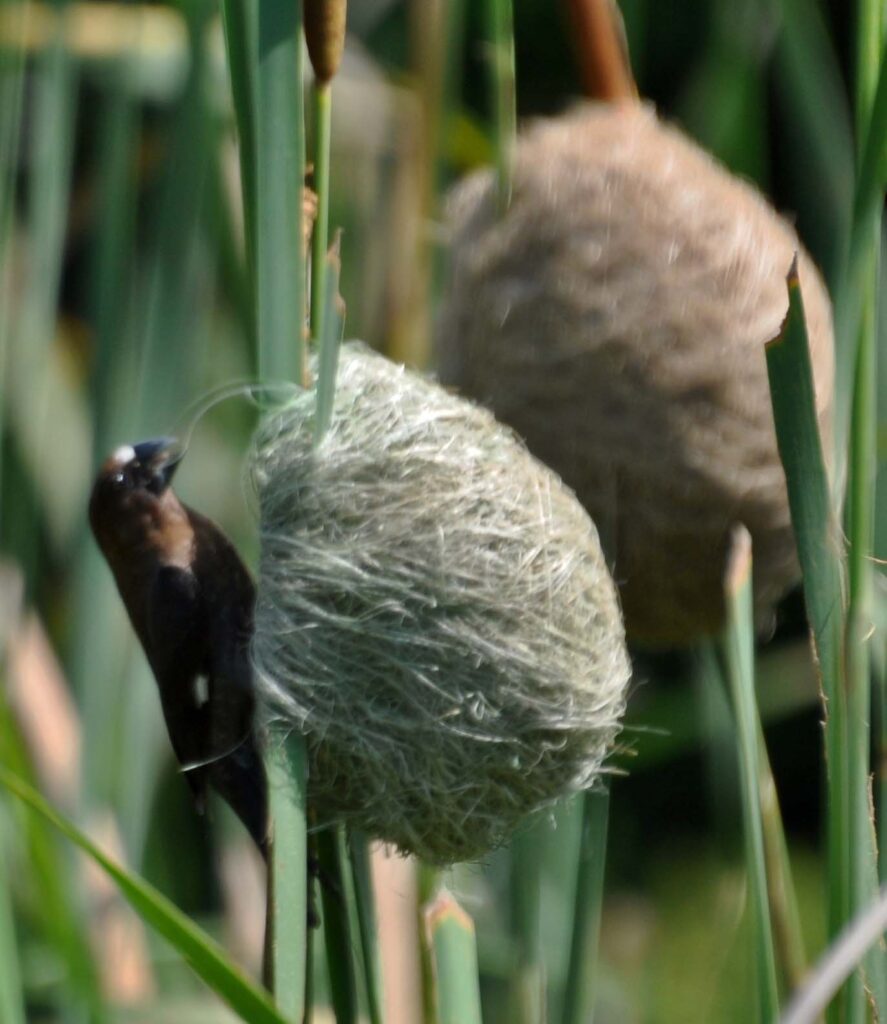
And here’s a bonus photo of a damselfly, just because.
